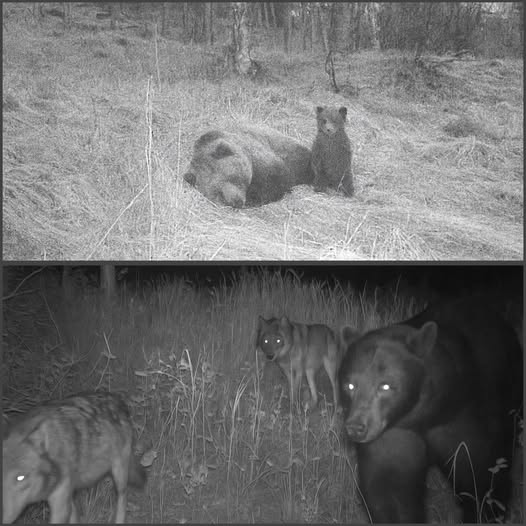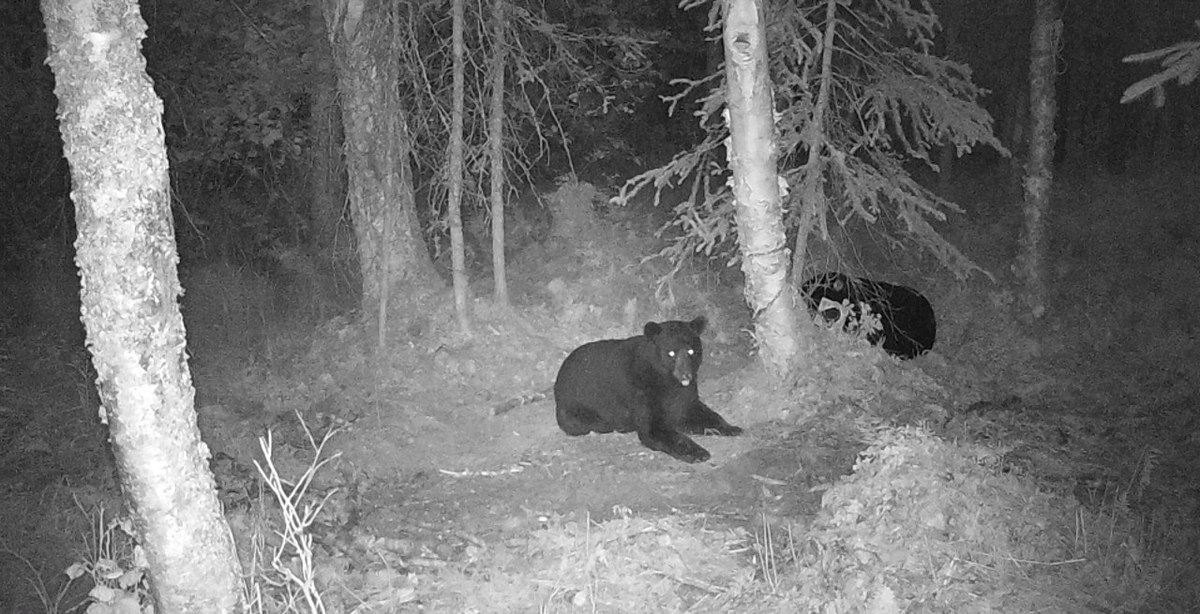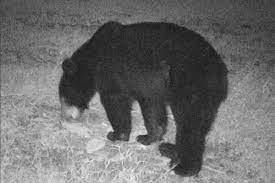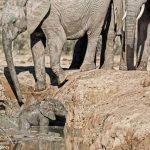The Bear Who Walked With Wolves

In the spring of 2000, a trail camera hidden deep within the forests of Karelia captured a scene that seemed destined for tragedy. A wide-eyed bear cub stood beside the still body of its mother, who had collapsed suddenly from what appeared to be a heart attack or some other unknown cause. The cub lingered in confusion, trembling with uncertainty, before finally vanishing into the dense trees.
Researchers who later reviewed the footage were heartbroken. They knew the harsh truth: a cub so young, barely able to forage for itself, rarely lived long without its mother. Quietly, they assumed the forest had already claimed another orphan.
But nature has a way of writing stories stranger than fiction.
Five years later, one of those same researchers had shifted his focus from bears to wolves. While scanning early recordings of a wolf migration, his eyes caught something unusual—something that made him freeze. Walking in steady rhythm among the pack was not another wolf, but a young brown bear.
At first, he thought it must be a trick of the grainy footage, but the animal’s movements, its size, its unmistakable form left no doubt. It was a bear—alive, healthy, and at home among the wolves. Stunned, he reached for the phone and called his colleagues.
Their response surprised him even more. “Oh, that bear?” one of them said with a smile. “He’s been with the wolves for five years now. We even have footage of him trailing them as a cub.”
For the researcher, the revelation was overwhelming. He had once mourned that tiny cub as lost to the wilderness, yet here it was—thriving, adopted by a species not its own, raised and accepted as part of the pack.
Years later, when asked about the discovery, he put it simply: “I thought I watched his story end. Turns out, it was only the beginning.”











